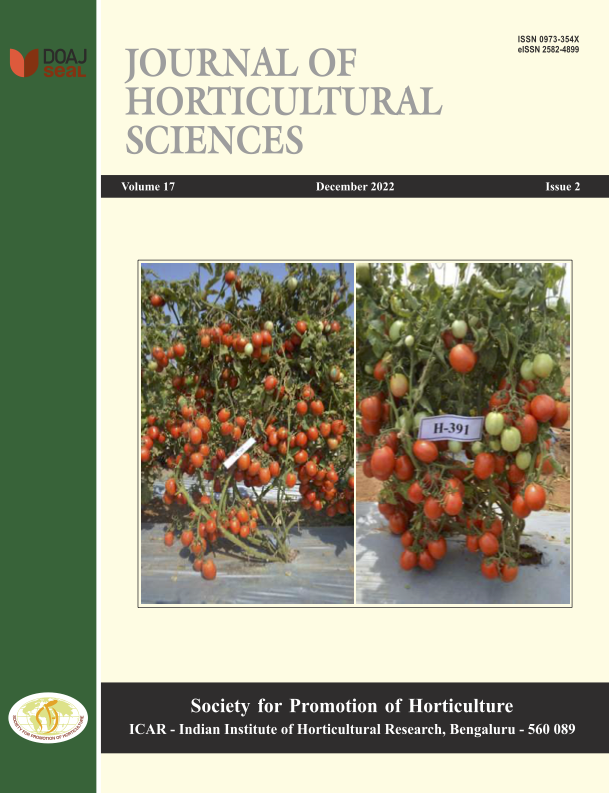Possibility of early detection of graft incompatibility in some commercial plum cultivars by phenolic compounds analysis
DOI:
https://doi.org/10.24154/jhs.v17i2.1047Keywords:
Apricot rootstock, incompatibility, myrobalan rootstock, phenolic content, plumAbstract
The incidence of incompatibility signs in the grafting point can be delayed, and the analysis of phenols is used as an applicable early sign for the detection of graft incompatibility. Accordingly, this study mainly aimed to investigate compatibility/incompatibility in 10 commercial plum cultivars grafted on myrobalan and apricot rootstocks, followed by determining the role of phenols in graft incompatibility. The evaluated cultivars included Santarosa, Ghatreh tala, Shams, Dargazi, No. 16, No. 17, Laroda, Simka, Bokhara, and Stanley. The results showed significant differences in the stem diameter. The union graft location in Shams, Laroda, Simka, Stanley, and Ghatreh tala cultivars on apricot rootstock was thicker than the scions and stocks. Phenolic compounds in the union graft decreased in all plum cultivars on myrobalan rootstock in comparison with other sites. Finally, the most phenolic accumulation belonged to the union graft on Santarosa, Ghatreh tala, and Shams on apricot rootstocks. Therefore, it seems that phenolic compounds in plums can be used as a biochemical marker in graft incompatibility.
Downloads
Downloads
Published
Issue
Section
License
Copyright (c) 2022 Ebrahim Ganji Moghadam, Sara Arghavan, Ahmad Fahadan, Mahboubeh Zamanipour

This work is licensed under a Creative Commons Attribution-NonCommercial-ShareAlike 4.0 International License.
Authors retain copyright. Articles published are made available as open access articles, distributed under the terms of the Creative Commons Attribution-NonCommercial-ShareAlike 4.0 International License, which permits unrestricted non-commercial use, distribution, and reproduction in any medium, provided the original author and source are credited. 
This journal permits and encourages authors to share their submitted versions (preprints), accepted versions (postprints) and/or published versions (publisher versions) freely under the CC BY-NC-SA 4.0 license while providing bibliographic details that credit, if applicable.





 .
. 











